Fresh Herbs: Here's How to Use 'Em!
This is the time of year that avid gardeners spend their cold, dreary evenings pouring over seed catalogs and watching gardening HOW-TO videos (check out www.growingagreenerworld.com). I’m one of these avid gardeners, and one of the gardening topics the avid cook in me is especially interested in is growing my own herbs.
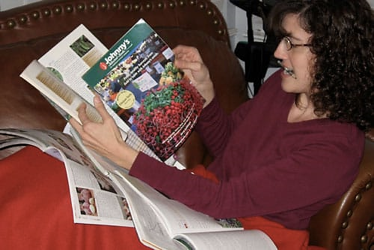
But I have to admit that I’m not that great at using them after I grow them. So I’m adding that aspect to my winter studies. While surfing the Internet for specific information regarding cooking with fresh herbs, I found Martha Stewart’s finely crafted site with her excellent information. She says that if we follow these guidelines for using herbs (fresh and dried), we’ll become seasoning experts! See if any of her suggestions are new to you. According to Martha:
Opinion wavers from person to person, but generally fresh and dried herbs are interchangeable. Just remember to be mindful of the dish you're making and the general ratio (i.e. how much dried equals fresh). The rule of thirds states that 3 parts fresh herb is equal to 1 part dried herb. For example, 1 tablespoon of finely chopped basil is equal to 1 teaspoon of crushed dried basil. When in doubt, easy does it; add in less than you think you need and adjust after you've tasted the dish. Use just enough to heighten natural food flavors.
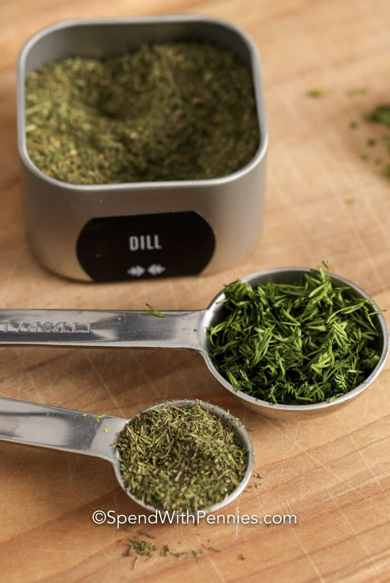
If using dried herbs, start with ¼ teaspoon herbs for every four servings; ¼ teaspoon to one pound of meat, poultry, fish; ¼ teaspoon to 2 cups sauce, vegetables, soup.
Always crush dried herbs in the palm of your hand before adding them to the recipe or dish; this helps hasten flavor release.
Dried herbs are stronger, so they should be added to raw or partially cooked foods to provide maximum flavor for your dish during the entire cooking process.
Add dried herbs at the same time as you do the salt and pepper to meats, vegetables, sauces, and soups.
In long-cooking foods, such as soups and stews, add your fresh herbs during last half hour of cooking time.
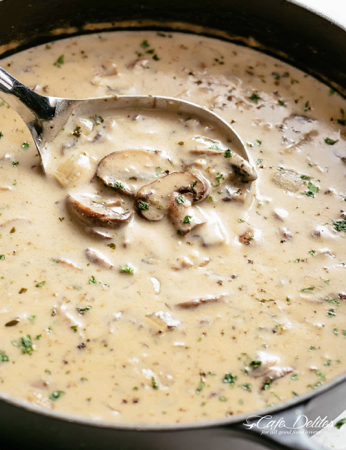
Always add fresh herbs to juices or cold sauces well ahead of time and let the mix stand overnight if possible.
Keep a balance with the seasonings. One strongly-seasoned dish per meal is generally a good rule.
Overall, the decision to use fresh versus dried herbs really just depends on what you're cooking and how much flavor you want to add to it. If you want a stronger flavor, use dried. If you want a subtle and refreshing flavor, use fresh. No matter what form you use them in, herbs add a delectable flavor to your meal that brings its delicious taste full circle.
In the end, however, opting for fresh is the more healthy way to cook. Fresh, live plant food brings antioxidants, vitamins, minerals, and trace elements to your dish that dried herbs simply can’t.
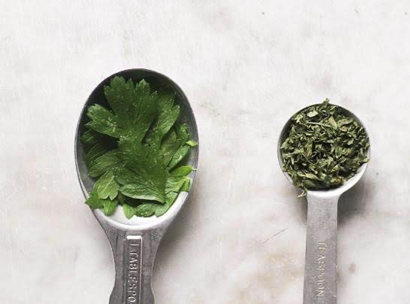
I’ll close with advice regarding buying fresh herbs. While it’s always lovely to have fresh herbs growing in your windowsill or garden, you may not have this luxury. So purchasing from your grocery store is the next best thing.
If that’s your situation, try to pick them up as close to your cooking time as possible. Look for bunches with vibrant color and aroma. Herbs packed in plastic should be pried open for a sniff test. If you can’t smell them then chances are you won’t be able to taste them.
Avoid limp and soggy bundles with any discoloration in the form of black spots or general yellowing. Grocery stores often overspray their produce to give the illusion of freshness, when in fact, excessive watering encourages rot and mold (this is especially important to remember when buying cilantro and parsley).
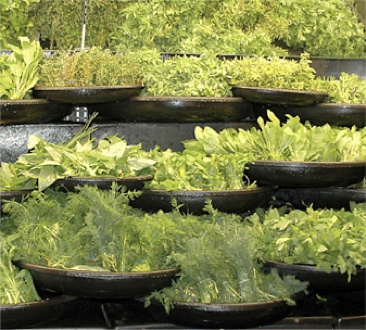
When you bring them home, you want to be sure to pre-treat them before placing them in the fridge, if not cooking with them immediately. First remove anything fastening your herbs together. Ties and rubber bands can bruise fragile plants affecting their longevity and flavor.
The root ends will need to be snipped as they will draw moisture away from the leaves resulting in premature wilting. If the roots are substantial then you can save them for soup or curry flavoring.

And finally, before you store your herbs in the fridge, wrap them in a slightly damp paper towel and put them in a ziplock bag. Make sure the bag has a little bit of air inside, and place it in the warmest part of your fridge (usually located either in the doors or on the top shelf). When you’re ready to use your herbs, just cut away any wilted or discolored leaves. Fresh herbs don’t have a long shelf life so use them as soon as possible.

But I have to admit that I’m not that great at using them after I grow them. So I’m adding that aspect to my winter studies. While surfing the Internet for specific information regarding cooking with fresh herbs, I found Martha Stewart’s finely crafted site with her excellent information. She says that if we follow these guidelines for using herbs (fresh and dried), we’ll become seasoning experts! See if any of her suggestions are new to you. According to Martha:
Opinion wavers from person to person, but generally fresh and dried herbs are interchangeable. Just remember to be mindful of the dish you're making and the general ratio (i.e. how much dried equals fresh). The rule of thirds states that 3 parts fresh herb is equal to 1 part dried herb. For example, 1 tablespoon of finely chopped basil is equal to 1 teaspoon of crushed dried basil. When in doubt, easy does it; add in less than you think you need and adjust after you've tasted the dish. Use just enough to heighten natural food flavors.

If using dried herbs, start with ¼ teaspoon herbs for every four servings; ¼ teaspoon to one pound of meat, poultry, fish; ¼ teaspoon to 2 cups sauce, vegetables, soup.
Always crush dried herbs in the palm of your hand before adding them to the recipe or dish; this helps hasten flavor release.
Dried herbs are stronger, so they should be added to raw or partially cooked foods to provide maximum flavor for your dish during the entire cooking process.
Add dried herbs at the same time as you do the salt and pepper to meats, vegetables, sauces, and soups.
In long-cooking foods, such as soups and stews, add your fresh herbs during last half hour of cooking time.

Always add fresh herbs to juices or cold sauces well ahead of time and let the mix stand overnight if possible.
Keep a balance with the seasonings. One strongly-seasoned dish per meal is generally a good rule.
Overall, the decision to use fresh versus dried herbs really just depends on what you're cooking and how much flavor you want to add to it. If you want a stronger flavor, use dried. If you want a subtle and refreshing flavor, use fresh. No matter what form you use them in, herbs add a delectable flavor to your meal that brings its delicious taste full circle.
In the end, however, opting for fresh is the more healthy way to cook. Fresh, live plant food brings antioxidants, vitamins, minerals, and trace elements to your dish that dried herbs simply can’t.

I’ll close with advice regarding buying fresh herbs. While it’s always lovely to have fresh herbs growing in your windowsill or garden, you may not have this luxury. So purchasing from your grocery store is the next best thing.
If that’s your situation, try to pick them up as close to your cooking time as possible. Look for bunches with vibrant color and aroma. Herbs packed in plastic should be pried open for a sniff test. If you can’t smell them then chances are you won’t be able to taste them.
Avoid limp and soggy bundles with any discoloration in the form of black spots or general yellowing. Grocery stores often overspray their produce to give the illusion of freshness, when in fact, excessive watering encourages rot and mold (this is especially important to remember when buying cilantro and parsley).

When you bring them home, you want to be sure to pre-treat them before placing them in the fridge, if not cooking with them immediately. First remove anything fastening your herbs together. Ties and rubber bands can bruise fragile plants affecting their longevity and flavor.
The root ends will need to be snipped as they will draw moisture away from the leaves resulting in premature wilting. If the roots are substantial then you can save them for soup or curry flavoring.

And finally, before you store your herbs in the fridge, wrap them in a slightly damp paper towel and put them in a ziplock bag. Make sure the bag has a little bit of air inside, and place it in the warmest part of your fridge (usually located either in the doors or on the top shelf). When you’re ready to use your herbs, just cut away any wilted or discolored leaves. Fresh herbs don’t have a long shelf life so use them as soon as possible.
Sources:
- www.brownthumbmama.com
- www.spendwithpennies.com
- www.cafedelites.com
- www.justapinch.com
- www.jonsmarketplace.com
- www.urbancultivator.net
 Alice Osborne
Alice Osborne
Weekly Newsletter Contributor since 2006
Email the author! alice@dvo.com
